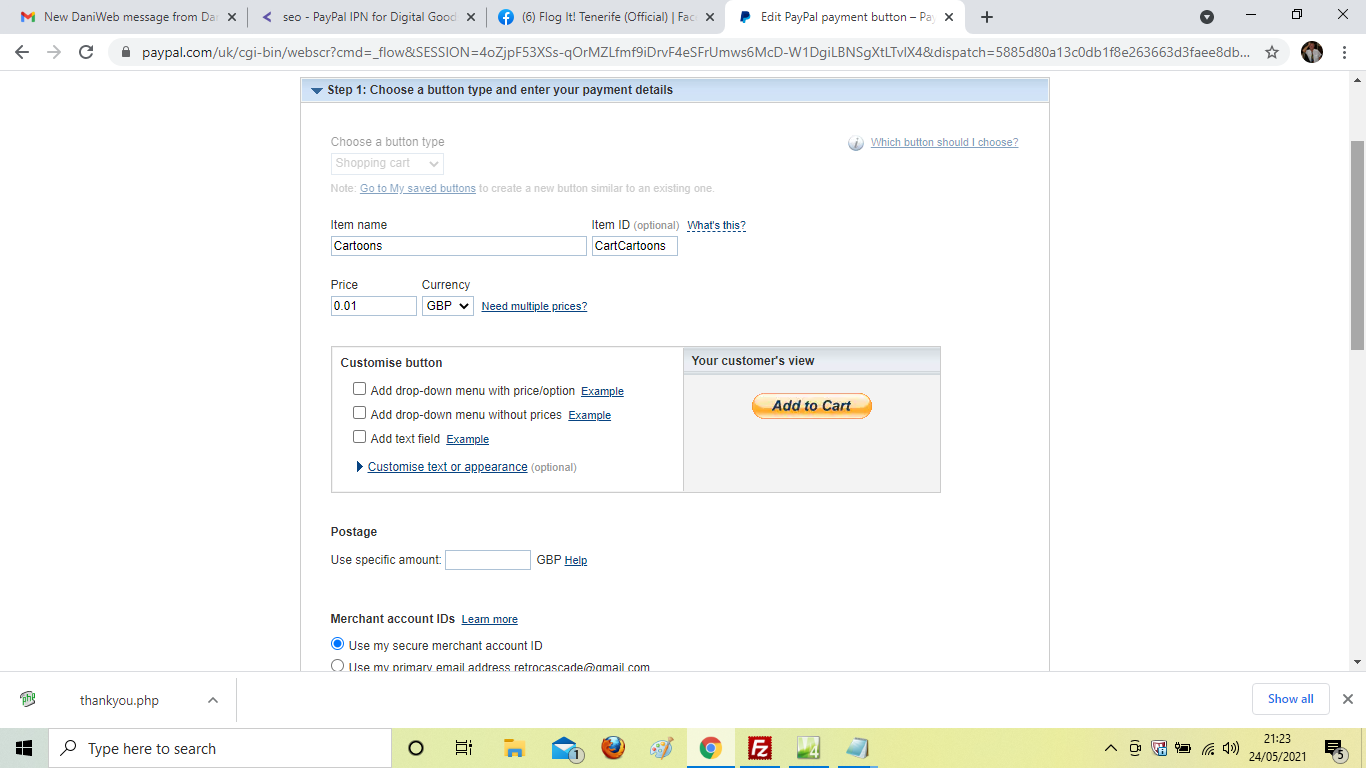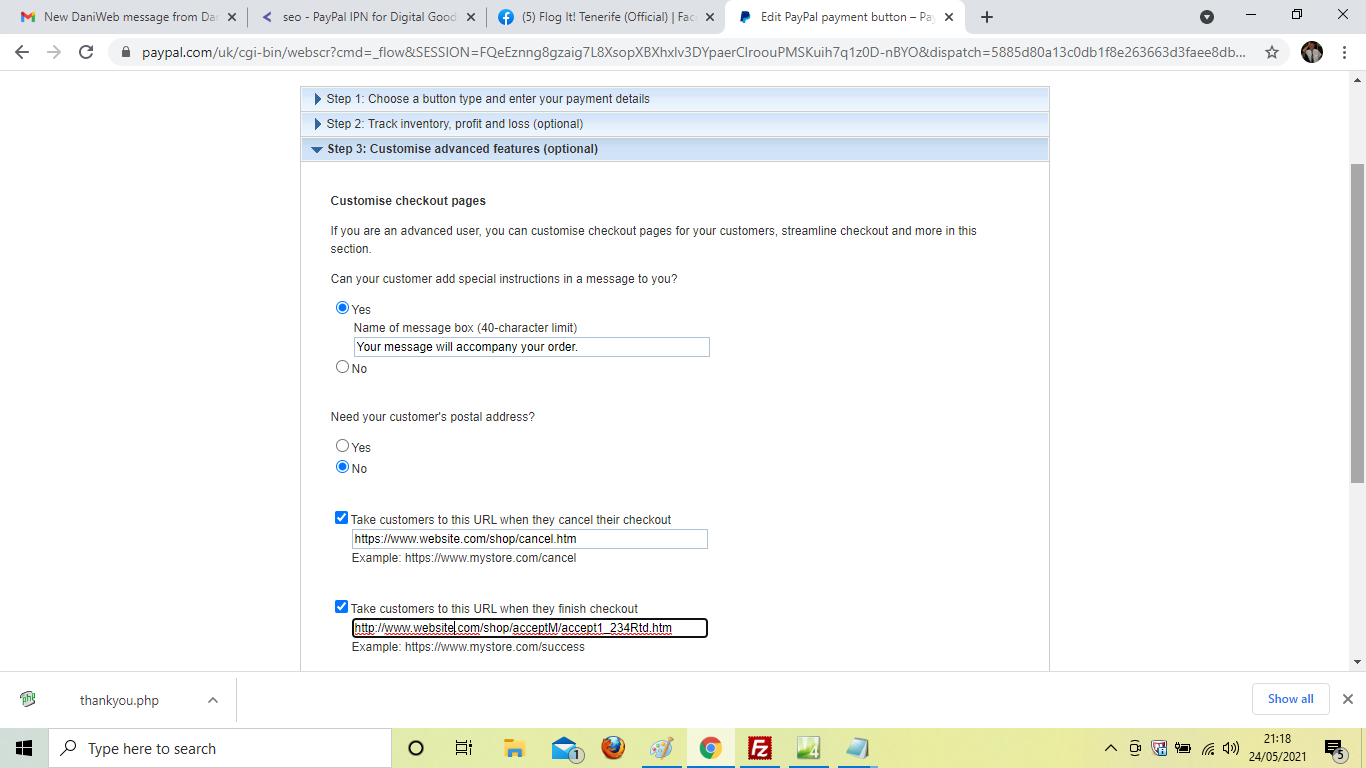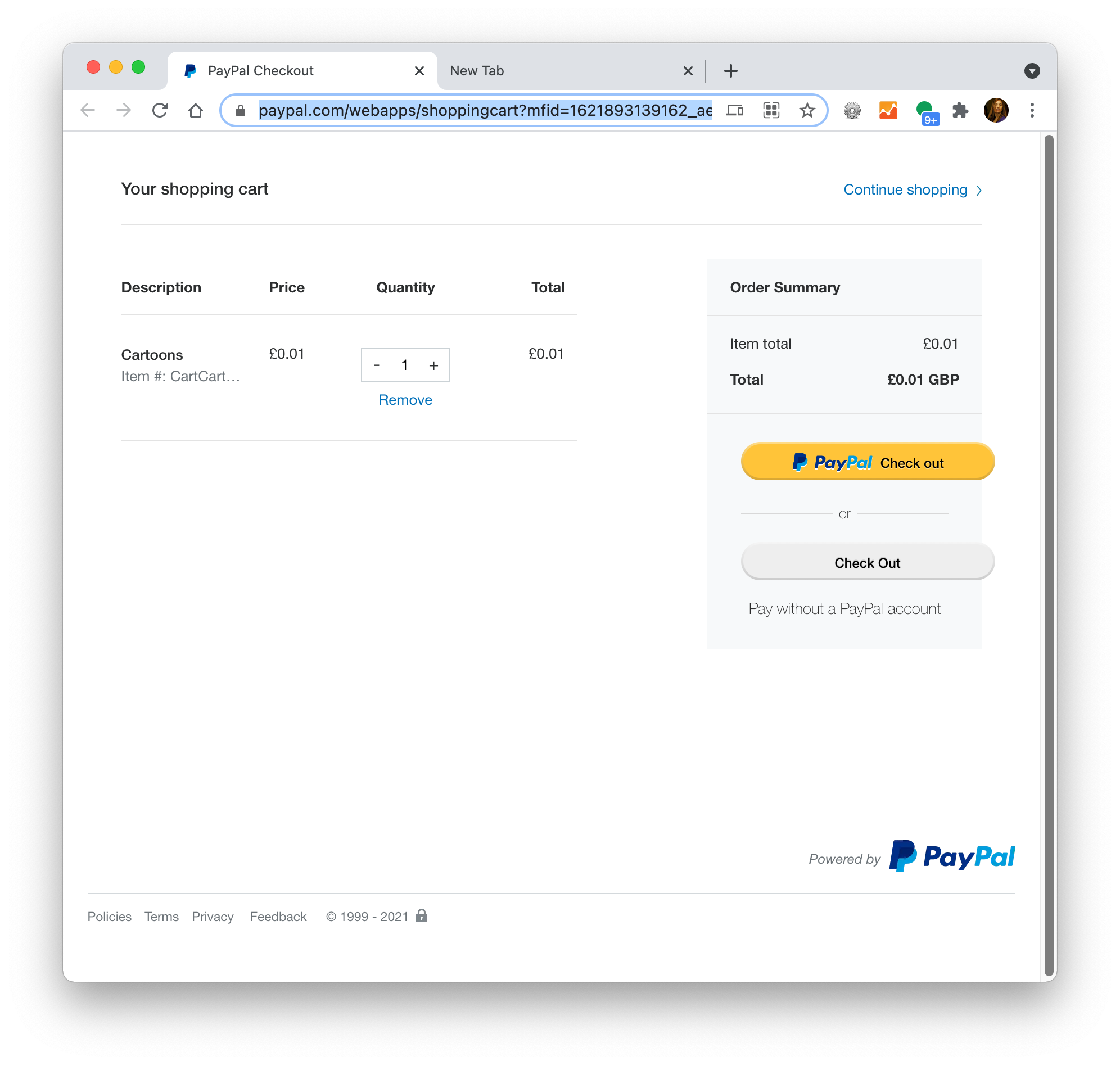I appreciate you helping me with this problem, thank you. I have lots of pages in my shop, they are all <form> Add to Cart and the View Cart, they both work when I make a 1p sale, but I don't get the option of paying with PayPal, just my Debit card. Here is my button code, it's the same format on all my pages, it's just the code that's different.
I use a test-listener.htm (which is also in the root directory on my server) and it finds the IPN and it goes straight to where it lives on the thankyou.php page.
Thee thankyou.php page has html which assures the customer his/her transaction is received.
BUT, there's no download urls for the customer's order to be downloaded, even though they're in the PayPal 'return url' box.
This is completely baffling me and has been since before Xmas, I trid to install the smart buttons but lordy, that one was a maze, I had to give upon it!
I'd be so grateful for any clues, I get good hits on my site, but my sales have been zilch, apart from the odd one or two that slipped in somehow. I watch ms clarity and see the cart buttons clicked on, so there is activity.
Regards and gratitude, I hope I've explained it OK, from Steve




